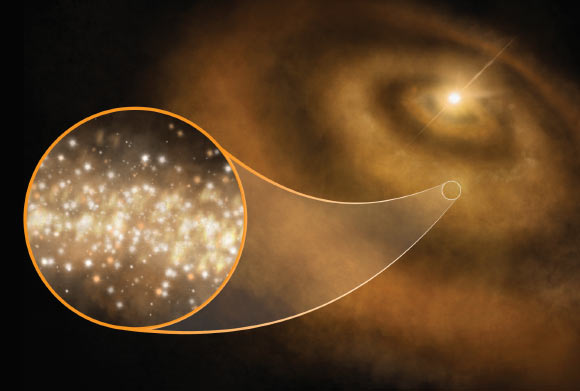| 18th of June 2018 |
|---|

|
| Cosmic nano-diamonds |
| by Greaves et al. |
|
For a couple of decades, astronomers have been puzzled by Anomalous
Microwave Emission (AME), excess radiation detected between ~10 and
~60 GHz. Spinning dust had been proposed as the cause for AME, however
in a paper published last week in Nature Astronomy,
Greaves et al. report that the emission is likely to originate from
nanodiamonds about 1.5-2.2 nanometres in size.
The image above is an artist's impression of nanoscale diamonds
surrounding a young star (image credit: S. Dagnello, NRAO/AUI/NSF).
Greaves et al. used the Australia Telescope Compact Array and the Green Bank Telescope to survey 14 young stars for signs of AME. Excess emission was detected from only three stars — V892 Tau, HD 97048, and MWC 297 — which are also the only stars of the 14 that show the infra-red spectral signature of nanodiamonds. Nanodiamonds are likely to form out of a superheated vapor of carbon atoms in star-forming regions in a manner akin to industrial methods of creating nanodiamonds on Earth. Lead author Jane Greaves describes how this work which started 11 years ago, came to fruition. |